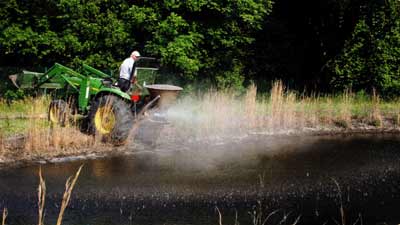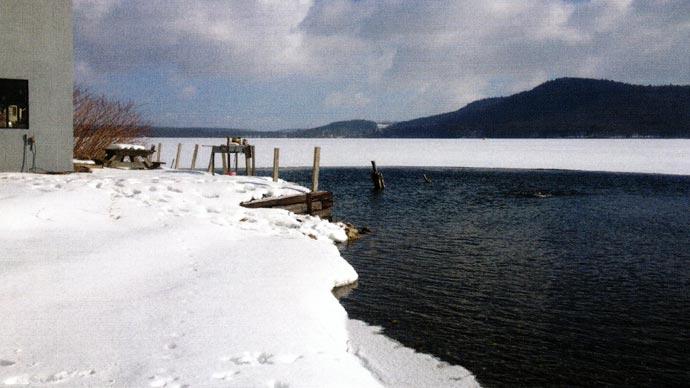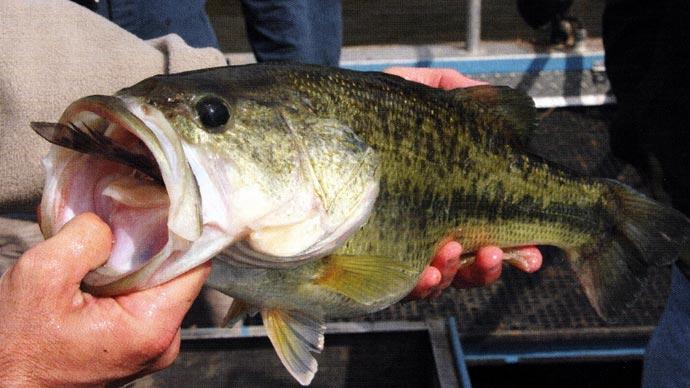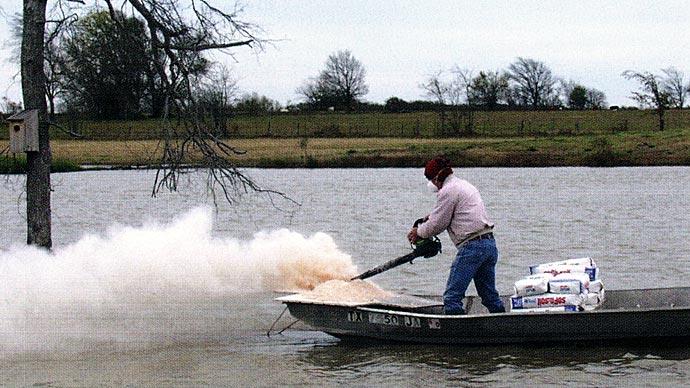
I dread late winter. There is not much to do. Hunting season is over, it is still cold, college football has ended, and although spring is just around the corner, fishing has not really heated up yet. I also dread the phone calls I receive, because most involve dead fish.
It usually starts in January or February in the southern United States, and can continue into May. The weather has been unpredictable, with rollercoaster temperature swings and frequent storms. The calls go something like this. "My fish are dying. It has been a handful of fish each day for the past two weeks. Mostly catfish but some bream and bass, too. I think my neighbor poisoned my pond."
This issue is almost never an angry neighbor. Sure, you and Jim do not see eye to eye on a few things, and you probably should apologize for running over his cat, but it is highly unlikely he resorted to piscicidal retribution. No, it is probably a less vindictive and more natural cause.
So, what could it be?
My go-to cause on any fish kill from late spring, summer, and fall in the South is oxygen. Ponds stratify soon after the surface waters start to warm, leading to hot, shallow water and cool deeper waters. Phytoplankton keep the oxygen levels high in the shallow waters, but there is not enough light down deep. In these deep waters, oxygen levels begin to fall as oxygen is used up as fish breathe, organic matter decomposes, and a host of biological and chemical processes play out. When oxygen levels get low enough, all you need is a strong storm to mix it all up and you get a pond turnover.
But it is February, headed straight into March! The pond is not stratified; in fact, it is probably still mixing from winter. Moreover, the water temperature is still cold. Cold water holds a lot more oxygen than warm or hot water, so I really doubt that oxygen is to blame.
A telltale sign of the underlying cause is the presence of external signs of distress. A few fish die every day, and it is not species specific, but sick fish may show external issues like patches of fungus, red sores, and large ulcers in the head or back. Fins may be eroded, and fish are generally sluggish and near the surface and shoreline.
The problem is most likely the pond water itself. Many ponds have underlying geologies that are low in dissolved ions. Alkalinity, which is a measure of the negatively charged ions dissolved in the water, acts as a buffer for pH changes in the water. Alkalinity encourages primary productivity in ponds and helps prevent wide swings in pH. Similar to alkalinity, water hardness is the overall concentration of positive ions. Hardness reduces fish stress in ponds and provides important elements, such as calcium and magnesium, for animal survival.
It usually surprises people when I tell them that fish cannot survive in pure water. If you have ever performed a complete change of an aquarium's water and mistakenly used distilled water, you know what I mean.
Fish need some ions in their external environment. Osmosis is the process of concentrations seeking equilibrium, so ions tend to move from areas of higher concentration to areas of lower concentration, and water moves in the opposite direction. When water has low concentration of ions, the ions in the fish's blood are in higher concentration and try to leave the body. Conversely, the outside water tries to enter because they want to equilibrate. This is stressful to the fish, as it has to constantly remove water and maintain blood ion concentrations. Thus, water needs to contain ions at similar concentrations to fish blood to keep fish healthy.
For good fish growth and to ensure healthy fish, alkalinity and hardness values of at least 20 mg/L (ppm) are recommended. When values are below 20 mg/L, fish tend to grow slowly, the pond is not very productive, and fish may become stressed and die. This is especially true during winter and early spring when weather is unpredictable. Some nights it is below freezing, while others feel like a midsummer's eve. Heavy storms bring influxes of cold or warm water, and rainwater is very low in alkalinity. This stresses fish, making them susceptible to disease and infections that opportunistically invade an already sick or stressed fish.
Our friend, Mark Cornwell, who writes the column The Fish Professor, had between 6-8" of ice on his upstate New York pond on January 10. When a freak winter warming spell shot the temperature into the 60s on January 10 and 11, his pond thawed within 12 hours. That's a perfect setup for fish to become stressed. So far, he's not reported any fish issues, but he's set up for that to happen and can't do a thing about it. Thank goodness his alkalinity is in a healthy range.
Consistently clear water is also a good indicator that alkalinity and hardness are low. Ponds with low alkalinity cannot effectively use nutrients, so they tend to stay relatively clear. If you plan to fertilize your lake to increase fish production, you need to make sure alkalinity is adequate. Fertilizer will not be utilized effectively in acidic waters.
If you suspect that your pond may suffer from low alkalinity and hardness, either test pond water for alkalinity, or skip that step and go straight to a soil test. A soil test will not only tell you if you need to add lime, but how much lime you need to add. If you typically need to lime your garden or pasture, you probably need to lime your pond.
The solution to poor water chemistry is relatively simple. To overcome low ion concentrations, one must add ions. The best way to accomplish this is to apply agricultural limestone. Lime should be spread amply and evenly across the pond surface. Remember that the goal is not to lime the water, it is to lime the underlying soils. Limestone reduces the acidity of the bottom soils, which makes nutrients more available, and increases the alkalinity and hardness of the water, which reduces stress on the fish over the winter.
The best time to lime is in the fall and winter, early spring at the latest. One reason for the cooler season is that the limestone may cause a temporary drop in pond fertility by reducing phosphorus concentrations. The other reason is that limestone dissolves slowly, so application is best done well before the warmer months, which is the growing season for warm water fish. However, if fish are dying in the pond, the best time to lime is right now.
The lime requirement is determined by soil testing. In general, ponds that need lime will require at least one ton per acre, usually two or more. All lime is not the same. Only use agricultural calcitic or dolomitic limestone in ponds with fish populations. Other forms of lime (hydrated, slaked, or quick) can be used to lime empty ponds before fish are stocked, but if they are used in filled ponds, they cause the pH to increase dramatically, killing fish.
Liming a pond can be a lot of work. For example, a 10-acre pond might need 20 tons of lime, spread evenly on the surface. This requires a barge and a crew of hard-working people. The pond owner can certainly do it him or herself with some help, but it may be easiest to contract it out to a professional. The cost of a professional is reasonable and easily offset by the value of saving your fish.
An application of agricultural limestone typically lasts for three to five years, depending upon the amount of water flow through the pond. After the first complete application, you may consider adding a maintenance dose every year. In the example above, you would add 20 tons of lime to the 10-acre pond in year 1, and then add maybe 4 tons per year to keep the pond healthy.
So, if you see fish dying in the late winter or early spring, test your soil or your water. If alkalinity is low, a little manual labor and some inexpensive crushed limestone should make your pond all better.
Reprinted with permission from Pond Boss Magazine



